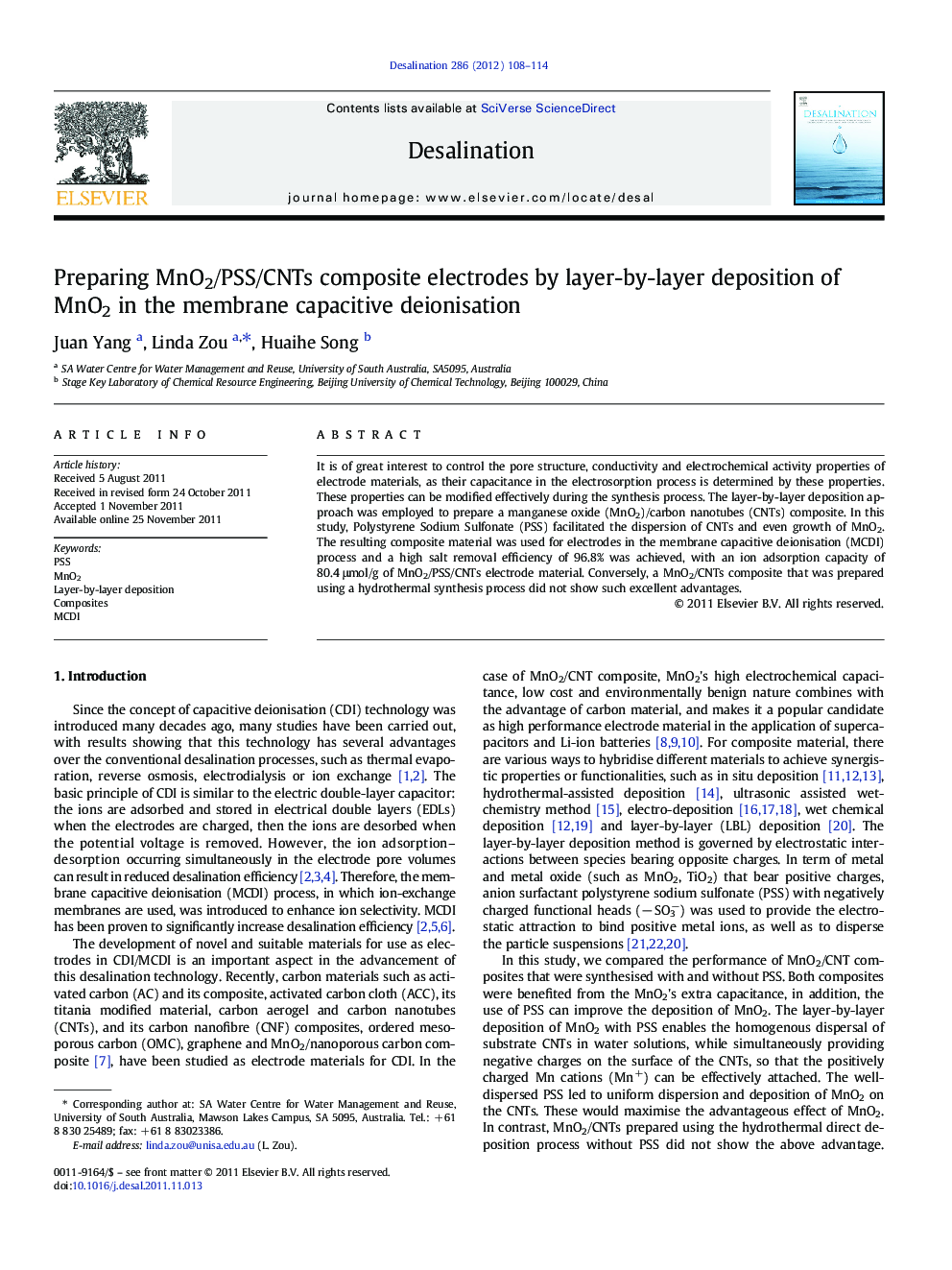| Article ID | Journal | Published Year | Pages | File Type |
|---|---|---|---|---|
| 624497 | Desalination | 2012 | 7 Pages |
It is of great interest to control the pore structure, conductivity and electrochemical activity properties of electrode materials, as their capacitance in the electrosorption process is determined by these properties. These properties can be modified effectively during the synthesis process. The layer-by-layer deposition approach was employed to prepare a manganese oxide (MnO2)/carbon nanotubes (CNTs) composite. In this study, Polystyrene Sodium Sulfonate (PSS) facilitated the dispersion of CNTs and even growth of MnO2. The resulting composite material was used for electrodes in the membrane capacitive deionisation (MCDI) process and a high salt removal efficiency of 96.8% was achieved, with an ion adsorption capacity of 80.4 μmol/g of MnO2/PSS/CNTs electrode material. Conversely, a MnO2/CNTs composite that was prepared using a hydrothermal synthesis process did not show such excellent advantages.
► Polystyrene Sodium Sulfonate (PSS) facilitated the layer-by-layer deposition of MnO2. ► MnO2/PSS/CNTs composites were used in MCDI for the first time. ► MnO2/PSS/CNTs composite electrode achieved higher salt removal efficiencies than MnO2/CNTs in CDI process.
